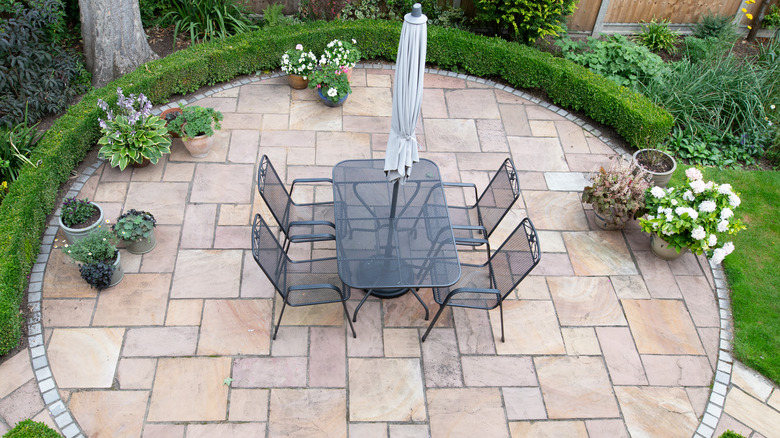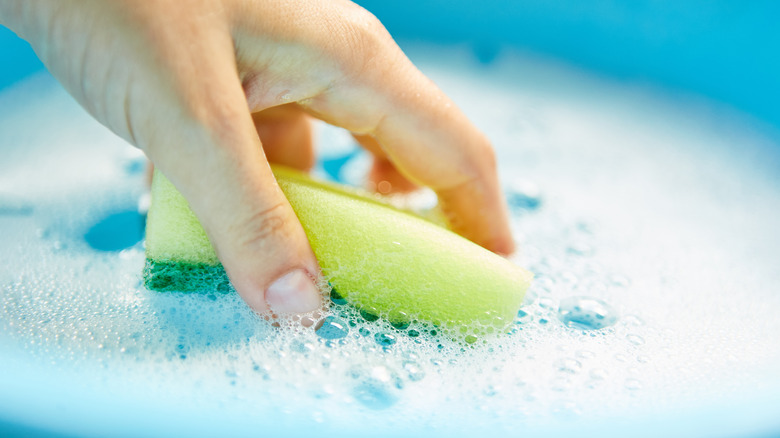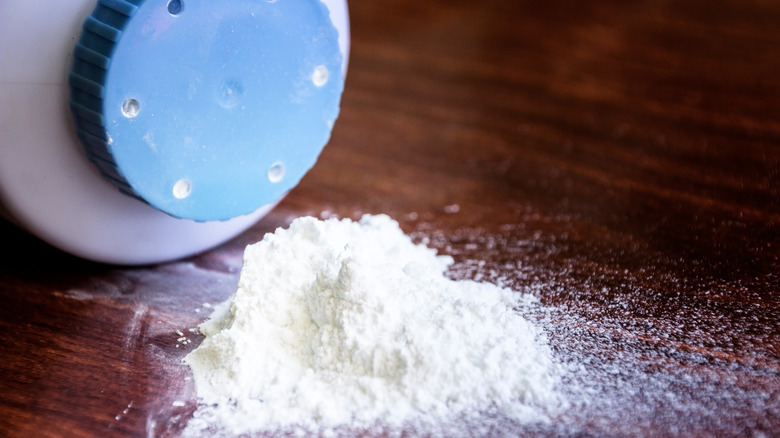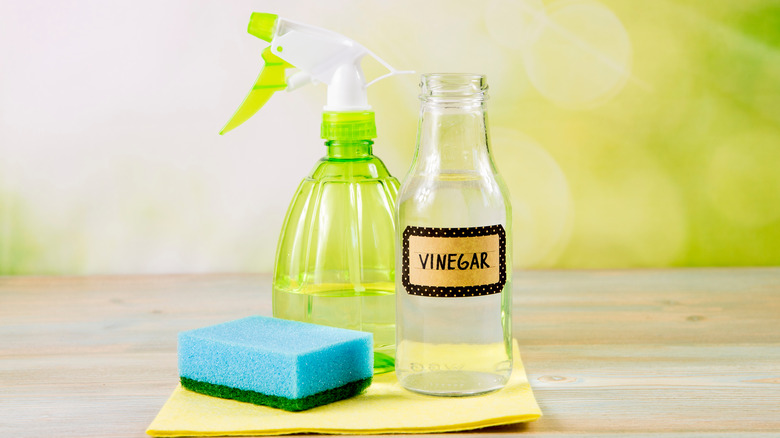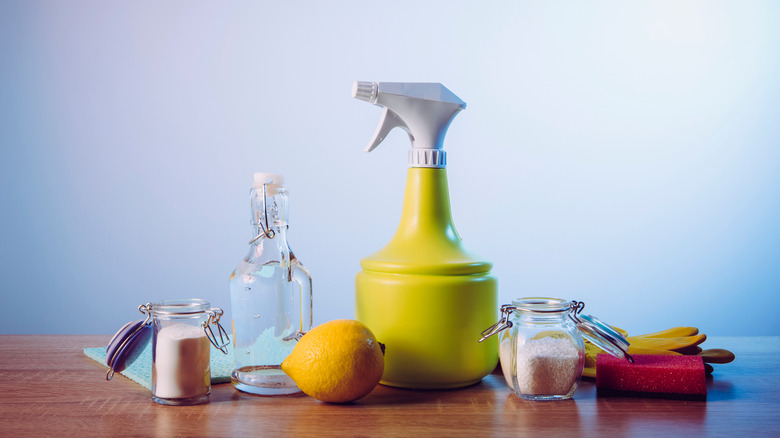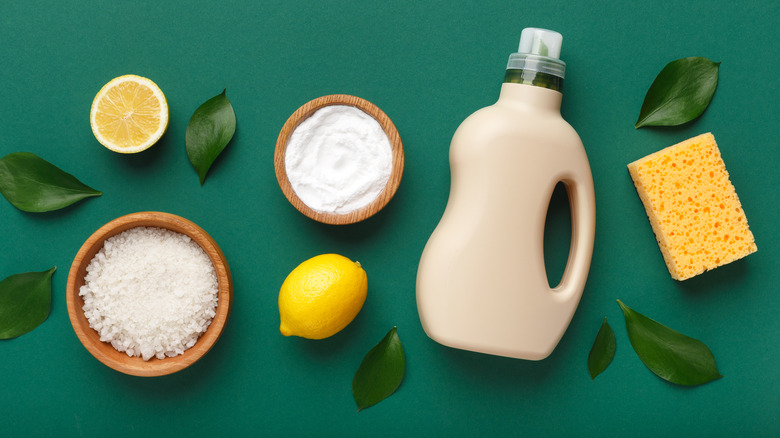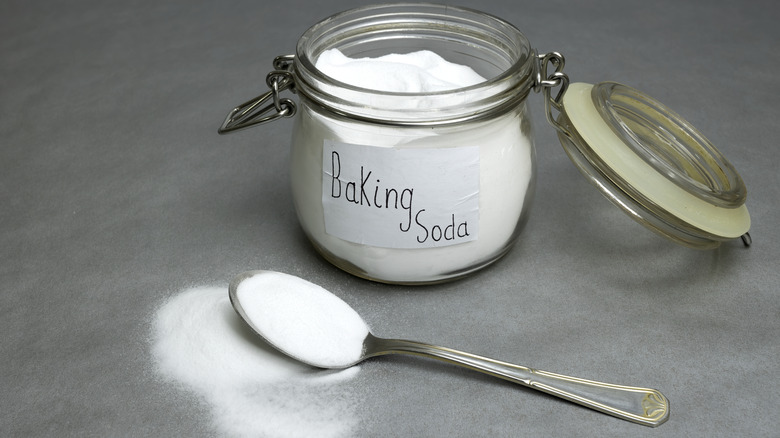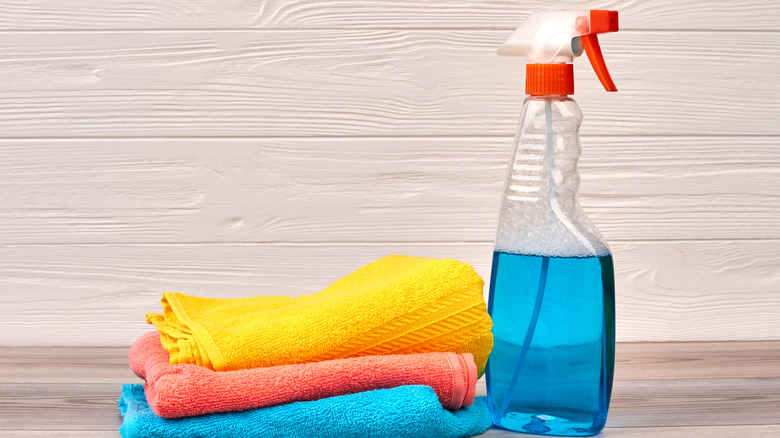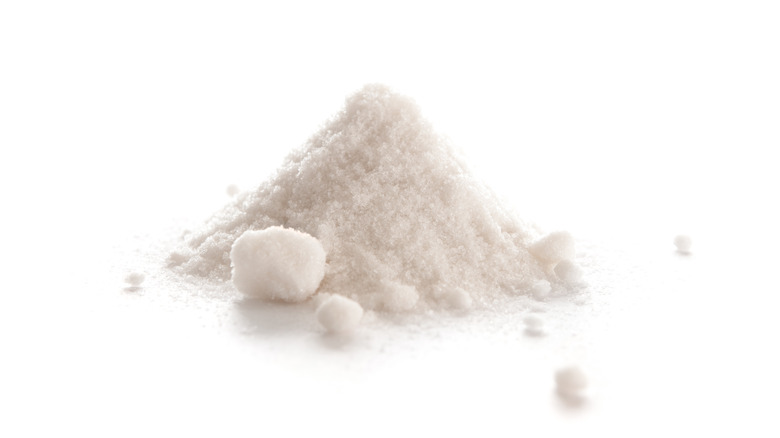8 Best Ways To Clean Metal Furniture
Furniture comes in different shapes, designs, sizes, and, for the sake of this article, materials. But as you already know, when choosing furniture pieces for your home, the most important factor to consider is the material it is made of because that's what largely decides the durability and maintenance level of your furnishings.
So, if yours happen to be metallic, and you're wondering how to keep it stain-free, rust-free, and overall in good shape for years to come, you're lucky because experts at Furniture Concepts recently discovered that metal furniture (such as steel furniture) is super easy to clean and maintain with a few tricks. However, The Southern Company warns that iron furniture is also susceptible to corrosion while aluminum pieces are subject to scruff marks.
But that's not all. Metal furniture, in general, can easily lose its appeal to grease, oil stains, dust, and — in the case of outdoor metal furnishings — animal droppings. And that is why we've created this maintenance post to give you a roundup of the eight most effective ways to clean your metal furniture without losing your sanity. Keep reading to find out.
Wash dust away with warm soapy water
Disclaimer: this method is for cleaning dusty or grease-stained metal furniture, not rusty ones. A post published on HGTV by Mick Telkamp revealed that homeowners could help their metal furnishings reclaim their newness by washing them with a brush or sponge dipped in warm soapy water.
Peters Billiards, however, cautioned that you should steer clear of abrasive soaps and cleaners that can strip the furniture of its protective finish and avoid leaving water to sit on your metal pieces after washing them as these may encourage rusting.
There are also several powder cleaners on the market for washing metal furnishings, and most of them are proven to restore metal luster. Anyway, once you prepare a solution of a cleaning powder or liquid soap introduced into a bucket of warm water, dip a sponge in it and scrub the furniture gently. Use a scrubbing brush if needed to loosen them gently for tough stains and grease. At the end of the process, rinse the furniture with clean water and towel-dry it immediately.
Clean galvanized metal furniture with baby powder and milk
This is the right cleaning method if your furnishings are made of galvanized metal. According to JP Exposure, the protective layer of zinc oxide with which every galvanized steel is coated is susceptible to degradation caused by alkaline build-up. Since alkaline is chemically attracted to galvanized metals, it accumulates over time, wears off the protective layer, and makes your furniture become dull, cloudy, and exposed to further degradation.
To combat this, engineers at JP Exposure encourage you to promptly clean your furnishings with a mix of milk and baby powder. First, you're to rinse the furniture with clean water to get rid of the debris on it and wash it with warm water and soap method as explained above. After that, mix the baby powder with milk and apply the mixture to your furniture with the aid of a soft bristle brush. JP Exposure recommends mixing 33% baby powder with 67% milk for an effective baby powder-and-milk cleaning solution. Finally, rinse your furnishings with a water hose and towel dry them.
Upkeep aluminum furniture with an acidic solution
According to Missouri Table & Chair, aluminum is more exposed to damage by denting, scratches, and other marks that further expose it to serious staining. The thing is that stains on a metal surface are easier to clean than those inside the crevices of marks and scratches left on it. Do you agree?
Now, before getting at removing those marks (because it's a must-do to prevent further degradation after cleaning), let's get your furniture cleaned in minutes. To do this, Fantastic Cleaners said you should make an acidic solution of vinegar or lemon juice by pouring a few tablespoons of vinegar or lemon into a bucket of boiled water. Then, dip a microfiber piece of cloth into the hot mix and wipe-clean your furniture with it.
Remember to reach for stains hiding in scratches and marks with a scrubbing brush. With that done and the furniture mopped-dry, repair the dents by sanding and coating them. FYI, always add 1 tablespoon of either acid to every 1.06 liquid quart of warm or hot water when making your vinegar solution; this is the right ratio, according to Fantastic Cleaners.
Use a vinegar-water spray on wrought iron furniture
One thing about wrought iron furniture pieces is that they have sophisticated textures and easily attract dust. The implication of this is that dust and dirt get trapped in the crannies and crevices of these textures easily, making them high-maintenance pieces.
Before delving into the cleaning process, let's take some cues from the experts at BBQGuys. According to them, wrought iron pieces should be cleaned two to three times a year, moved indoors during winter, and waxed with automotive spray wax once or twice a year.
With that in mind, whenever you're set to clean your wrought iron furniture, Yahoo! Life says you should first remove dust with a vacuum cleaner or a blower. After that, spray a mix of vinegar and water to the surface of the wrought iron piece, wipe the applied liquid along with the dirt using a microfiber cloth, and finally towel-dry it.
Clean with lemon and salt
Almost all types of metals acquire rust when exposed to water and air for prolonged periods. But some rust faster and to a greater extent than others. And even if you're conscious enough to always keep water and all forms of liquid away from your metal furniture pieces, seasons with saturated air cannot be avoided. Therefore, combating rust should be part of your metal furniture cleaning plan.
Now, the question is, how do you go about it, right? Well, Baltimore Home Cleaning comes to the rescue. According to them, you can treat rust with lemon juice and salt, or even a potato. To use the first option, mix lemon juice and salt in a bowl and apply it directly to obvious rust. Leave the mixture to sit for 20 minutes before scrubbing with a brush. Next, rinse and dry with a towel.
For the second option, slice a potato, apply some salt on the sliced surface, and use it to scrub stubborn rust off your furniture. Finally, wipe off the dirt with a piece of cloth.
Use a baking soda paste
According to House of Knives, baking soda makes a good cleaning agent, thanks to its ability to lift stains, dislodge particles that are impossible for soaps, and absorb bad odors. However, they also credit the powdery substance for its abrasive nature and say that it combines with water to form a powerful alkaline solution that can dissolve rust.
A little note: baking soda is only effective on mild rust. For overly-rusty metal furniture, use the previously described method.
So, how do you revamp that mildly rusty piece with a baking soda solution? Easy! Follow in the footsteps of AZ Rust. They explained that you should make a thick paste of baking soda by adding a little amount of water to a larger quantity of the powder. Once the paste is thick enough to sit on the surface of the piece without falling off, apply it to cover the rust for one to two hours. Afterward, use an old toothbrush to scrub the paste against the rust until you get sparkling clean furniture. Finally, rinse your metal furnishing and towel-dry it.
Remove fingerprints with a glass cleaner
There are several ways to keep your stainless steel furniture sparkling. As we all know, appliances made of stainless steel are elegant yet simple and can add a classic aura to the house. But unfortunately, they are also threatened by fingerprints, which can be distinguished clearly on their surface. But guess what? Experts at The Maids have now discovered that glass cleaners have proven to effectively remove fingerprints from stainless steel furnishings.
So how do you go about it? Compact Appliance to the rescue! According to them, people who choose to remove fingerprints from stainless furniture with a glass cleaner should repeatedly apply the liquid to a lint-free piece of cloth and then clean the furniture piece with it in a circular motion. They warn against applying glass cleaners directly to your stainless steel furniture to avoid the appearance of ugly marks. Finally, rinse the off the cleaner and towel-dry your furnishings.
Banish tough corrosion with oxalic acid
Outdoor metal furniture is the most susceptible to rust, especially when left out in the open throughout the rainy season. But fret not; if your outdoor set is covered in stubborn rust, you can still revive it. How?
Well, a recent post published in Orlando Sentinel unveiled oxalic acid's power to remove tough rust stains. Working By Hand also explained that oxalic acid is by far more powerful than vinegar in the game of rust-removal. Now, the big question is, how do you use it?
Let's see. According to AZ Rust, you can completely banish tough rust with oxalic acid in four easy steps. The first step is wearing protective clothing and protecting your eyes, hands, and nose. The next step is to prep the rusty area by washing it with liquid soap and drying it. Next, make an oxalic acid solution by stirring 5 teaspoons of oxalic powder in 1 cup of water. Finally, apply the mix directly to the rusty surface, scrub with steel wool, and rinse with water before towel-drying. It's as simple as that!
